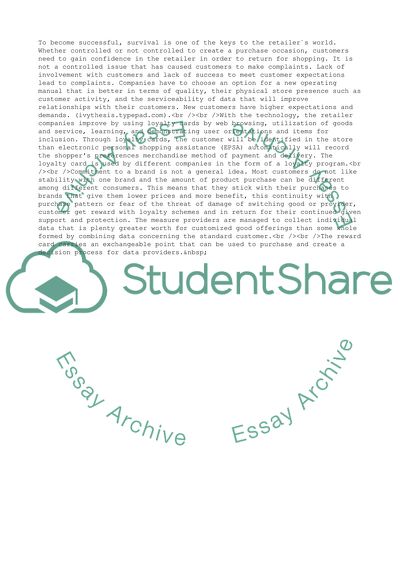Cite this document
(Loyalty Card and Customer Loyalty: Case of Tesco in the UK Study Example | Topics and Well Written Essays - 1500 words - 5, n.d.)
Loyalty Card and Customer Loyalty: Case of Tesco in the UK Study Example | Topics and Well Written Essays - 1500 words - 5. https://studentshare.org/management/1756515-loyalty-card-and-customer-loyalty-case-study-of-tesco-in-uk-aldershot-location
Loyalty Card and Customer Loyalty: Case of Tesco in the UK Study Example | Topics and Well Written Essays - 1500 words - 5. https://studentshare.org/management/1756515-loyalty-card-and-customer-loyalty-case-study-of-tesco-in-uk-aldershot-location
(Loyalty Card and Customer Loyalty: Case of Tesco in the UK Study Example | Topics and Well Written Essays - 1500 Words - 5)
Loyalty Card and Customer Loyalty: Case of Tesco in the UK Study Example | Topics and Well Written Essays - 1500 Words - 5. https://studentshare.org/management/1756515-loyalty-card-and-customer-loyalty-case-study-of-tesco-in-uk-aldershot-location.
Loyalty Card and Customer Loyalty: Case of Tesco in the UK Study Example | Topics and Well Written Essays - 1500 Words - 5. https://studentshare.org/management/1756515-loyalty-card-and-customer-loyalty-case-study-of-tesco-in-uk-aldershot-location.
“Loyalty Card and Customer Loyalty: Case of Tesco in the UK Study Example | Topics and Well Written Essays - 1500 Words - 5”. https://studentshare.org/management/1756515-loyalty-card-and-customer-loyalty-case-study-of-tesco-in-uk-aldershot-location.


